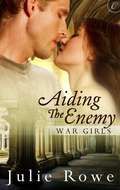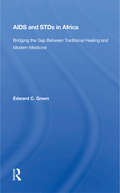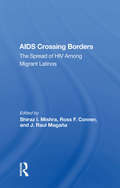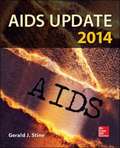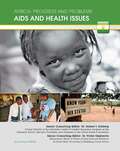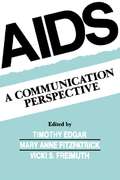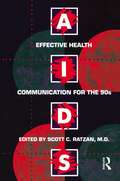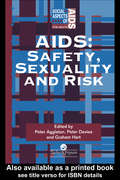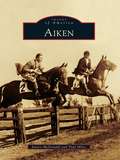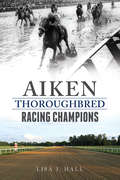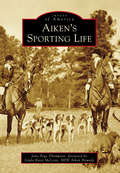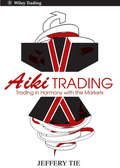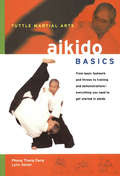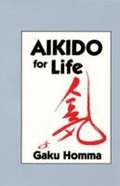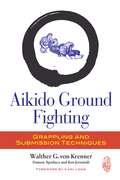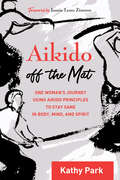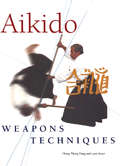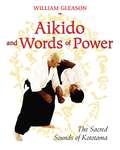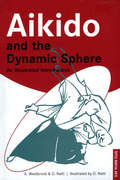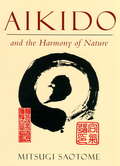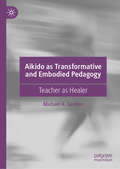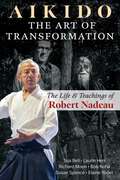- Table View
- List View
Aiding the Enemy
by Julie RoweBook three of War GirlsGerman-occupied Brussels, BelgiumDecember 1915Rose Culver is in grave danger. For months the Red Cross head nurse has been aiding Allied soldiers caught behind enemy lines, helping them flee into neutral Netherlands. It's only a matter of time until she's caught. Which makes it the wrong time to fall in love with a handsome German military doctor as devoted to the sanctity of human life as she is.The Great War has caused Dr. Herman Geoff to question everything he once believed. He knows Rose has been hiding British soldiers in her hospital-he's even treated some of them, refusing to go against his own Hippocratic oath. As a doctor, he admires Rose's skill and conviction. As a man, he can no longer deny his attraction to her. But when Rose is arrested for treason, Herman must choose between love for her and duty to his country...For more tales of love and war, download Saving the Rifleman and Enticing the Spymaster, available now! 32,000 words
Aids And STDs In Africa: Bridging The Gap Between Traditional Healing And Modern Medicine
by Edward C GreenThis book emphasizes the factors in the spread and control of AIDS that have received less attention in the literature. It suggests that a collaborative action program involving traditional healers is necessary if we wish to impact the spread of AIDS and other STDs in Africa.
Aids At 30: A History
by Victoria A. HardenSociety was not prepared in 1981 for the appearance of a new infectious disease, but we have since learned that emerging and reemerging diseases will continue to challenge humanity. AIDS at 30 is the first history of HIV/AIDS written for a general audience that emphasizes the medical response to the epidemic.Award-winning medical historian Victoria A. Harden approaches the AIDS virus from philosophical and intellectual perspectives in the history of medical science, discussing the process of scientific discovery, scientific evidence, and how laboratories found the cause of AIDS and developed therapeutic interventions. Similarly, her book places AIDS as the first infectious disease to be recognized simultaneously worldwide as a single phenomenon.After years of believing that vaccines and antibiotics would keep deadly epidemics away, researchers, doctors, patients, and the public were forced to abandon the arrogant assumption that they had conquered infectious diseases. By presenting an accessible discussion of the history of HIV/AIDS and analyzing how aspects of society advanced or hindered the response to the disease, AIDS at 30 illustrates for both medical professionals and general readers how medicine identifies and evaluates new infectious diseases quickly and what political and cultural factors limit the medical community’s response.
Aids Crossing Borders: The Spread Of Hiv Among Migrant Latinos
by Ross F. Conner Shiraz I. Mishra J. Raul MagañaAIDS has crossed every international border and affects all populationsthroughout the world, including migrant workers. In the U.S.,migrant workers are a hidden and sometimes maligned population withlimited access to needed health and welfare services, including HIVprevention. Little, however, is krown about the impact of the HIV IAIDS epidemic oo Latino farmworkers. This absence of systematic researchwas the impetus for the preparation of this book.This book is the first collection of research studies focusing specificallym migrant Latino farmworkers. The book brings together sevenresearch studies to provide a profile of the HN prevention, surveillanceand treatment needs of migrant workers. The editors combinetheir own work with that of nationally and internationally recognizedexperts to provide a comprehensive analysis of different aspects of theHIV epidemic among migrant Latino workers. They examine issuessuch as the HN prevention needs of Latino farmworking women andtheir children, the sexual beliefs and behaviors of Latino migrantworkers, the effects of migration m changes in sexuality and sexualpractices, the risk for HN through use of sex workers, knowledge aboutthe HIV I AIDS epidemic, the effectiveness of prevention programs, andpolicies and programs that may stem the spread of HIV among thispopulation. The book is notable for including, in addition to researchers'views, the perspectives of migrant workers and policymakers mHN prevention policies and programs.
Aids Update 2014: An Annual Overview of Acquired Immune Deficiency Syndrome
by Gerald J. StineAIDS UPDATE 2014 presents a balanced review of current research and information on HIV infection, HIV disease, and AIDS. AIDS UPDATE 2014 places this discussion within a biological, medical, and social framework. Unique to this textbook is the historical presentation of HIV/AIDS in terms of dates, times, and locations, as well as the meaning of those events in scientific, political, and social terms.
Aids and Health Issues (Africa: Progress and Problems #13)
by Leeanne GelletlyMillions of Africans die each year from infectious diseases, such as AIDS, malaria, and tuberculosis; from poor nutrition or lack of clean drinking water; or from diseases like measles and polio that have been conquered in developed countries through the use of vaccines. The continents widespread poverty, along with a lack of adequate hospitals and trained doctors and nurses, contributes to the health-care crisis. As a result, the life expectancy of people living in sub-Saharan Africa is about 54 yearsa lifespan roughly than 25 years shorter than that of the average American. This book explores the current health crisis in Africa, explaining the scope of the problems that the continent faces. It also describes efforts by humanitarian organizations and by African governments to train health-care professionals.
Aids: A Communication Perspective (Routledge Communication Series)
by Timothy Edgar Vicki S. Freimuth Mary Anne FitzpatrickPrevention through appropriate behavior is the best weapon available to fight further spread of HIV infection. However, individuals take necessary actions to prevent diseases such as AIDS only when they are properly informed and they feel motivated to respond to the information they possess. In order to achieve a clearer understanding of these two facets of the prevention process, this book examines the interplay of the messages individuals receive about AIDS at the public level and the messages exchanged between individuals at the interpersonal level. The specific purpose of the book is to provide a theoretical and conceptual foundation for understanding the pragmatic concerns related to the AIDS crisis in the United States and other parts of the world. The book represents the first systematic examination of how theory informs our understanding of AIDS and communication processes. Contributors explore the issues from a variety of theoretical and conceptual viewpoints. Their goal is to stimulate thought which will lead to the pragmatic application of the ideas presented. The chapters focus on four general communication concerns: * interpersonal interaction as it relates to choices individuals make about safer sex practices, * theory and practice of public campaigns about AIDS, * intercultural issues, and * critical and descriptive approaches for understanding news coverage of AIDS.
Aids: Effective Health Communicaton for the 90's
by Scott C. RatzanDespite educational efforts, the majority of Americans are still under the misconception that they are not at risk from HIV/AIDS infection. In addition, the federal government only spends 2% of the total designated federal AIDS funding toward prevention. Thus, information in respect to AIDS and health communication in any comprehensive nature is almost nonexistent.; This book aims to rectify the situation by presenting detailed analysis and actions necessary to confront the AIDS pandemic on every level of the communication realm. Contributors are experienced researchers, educators, government officials, and physicians. They examine the issue from a number of standpoints, including: communication, adolescent medicine, public administration, psychology, journalism, audiology, speech and language pathology, neurological surgery, preventive medicine and public health.
Aids: Safety, Sexuality and Risk
by Peter Davies Peter Aggleton Graham HartSome 12 years into the epidemic, with an effective preventive vaccine or therapy against HIV disease still to be found, this book reflects on the contributions of social and behavioural research to the development of interventions for prevention. After over a decade's work documenting HIV and AIDS-related knowledge, attitudes and behaviour, social researchers have begun to focus more clearly on perceptions of sexual safety and risk, and the factors that contribute to these. The issues addressed by the book were examined during three major conferences in 1994: the annual conference of the British Sociological Association, the 2nd International Conference on the BioPsychoSocial Aspects of AIDS and the Xth International Conference on AIDS. The book brings together key papers presented at each of these conferences, documenting issues of focal concern to social researchers, policy makers and health educators in the mid-1990s.
Aiken
by Paul Miles Janice McdonaldIt seems unlikely that a place as far off the beaten track as Aiken, South Carolina, would become the preferred wintering location for the denizens of New York society. But from the late 1800s, the most recognized names in America--the Vanderbilts, the Whitneys, and even the Roosevelts--began coming to this charming Southern city to escape the cold, relax among the oaks, and play. And play they did, establishing Aiken as an international polo capital and a premier place to ride, hunt, and golf. Aiken has so much history beyond the folks known as the winter colonists. Legends of the area's restorative powers date back to Native Americans. Aiken also boasts an amazing number of records, including the destination for the world's longest railroad in 1833 and the second-oldest 18-hole golf course in the United States, the Palmetto Golf Club, built in 1892.
Aiken Thoroughbred Racing Champions (Sports)
by Lisa J. HallSince the 1940s, forty racing champions have traveled the hallowed grounds at the historic Aiken Training Track. Thoroughbred icons such as Kelso, Tom Fool, Swale, Pleasant Colony, Conquistador Cielo and Shuvee trained at this world-renowned track. Numerous members of the Aiken Thoroughbred Racing Hall of Fame won the biggest races in the sport. These champions combined for a total of 546 wins in 1,395 starts, including wins in the Kentucky Derby, the Preakness Stakes and the Belmont Stakes. Race along with author Lisa J. Hall as she pays homage to these equine champions and an Aiken legacy.
Aiken's Sporting Life (Images of America)
by Jane Page Thompson Linda Knox McleanIn 1869, newspaper articles touted Aiken as a health and pleasure resort with the world's largest wooden hotel. Swirling social life and sporting action continued during the war years, when the women of society carried on local traditions. In 1950, Aiken was bustling with scientists and engineers who relocated to work at the Savannah River Site. The last half of the 20th century saw swelling crowds at polo matches, steeplechase races, fox hunts, golf courses, and cultural amusements. In the early 21st century, many Aiken sporting traditions mark milestone anniversaries. At the center of everything is Hitchcock Woods, a woodland paradise, pine-topped cathedral, and equestrian playground that remains open year-round. The Hitchcock Woods Foundation was established to safeguard this treasure within the heart of Aiken. The Aiken Horse Show, held each spring, and Blessing of the Hounds, held on Thanksgiving, are two of the most revered of Aiken's sporting traditions.
Aiki Trading: The Art of Trading in Harmony with the Markets (Wiley Trading #15)
by Jeffery TieA great reference for all beginner traders. Aiki Trading will look at a robust method to understand what the market is doing in a specified timeframe. Essentially, markets are either trending up, trending down, or is in sideways or range bound congestion. Chapters are devoted to each of these three conditions, and the concepts are explained in depth. In addition, specific trading strategies will be explored for the different market conditions. These strategies are what I define as high probability, low risk trading strategies that have higher probability of success because it conforms to the nature of how markets behave. With more than 25 years of experience in financial markets, Jeffery's stock market career began in 1977 with JM Sassoon and continued with Kim Eng Securities. During his time in Stock-broking, Jeffery witnessed many cycles of boom and bust, including the 1987 meltdown in worldwide equity markets. In 1997, Jeffery joined Refco Singapore. During this time he developed new expertise in International Futures Markets and FX. Jeffery joined CMC in April 2007. He was responsible for the content and presentation of CMC's educational programmes. And he is currently the Resident Trainer with SGX Academy, and is based in Singapore.
Aikido Basics
by Phong Thong Dang Lynn SeiserIn Aikido Basics, the beginning student will find invaluable advice and information for the study of this popular form of martial arts. Martial Arts Hall of Fame inductee, Dang Phong, shares his secrets to building a successful training program, testing for belt promotion, and understanding and developing Ki, the energy used in aikido. The author incorporates a discussion of aikido's origin, its history and philosophical underpinnings, and an explanation of the different branches of aikido.
Aikido Basics
by Phong Thong Dang Lynn SeiserIn Aikido Basics, the beginning student will find invaluable advice and information for the study of this popular form of martial arts. Martial Arts Hall of Fame inductee, Dang Phong, shares his secrets to building a successful training program, testing for belt promotion, and understanding and developing Ki, the energy used in aikido. The author incorporates a discussion of aikido's origin, its history and philosophical underpinnings, and an explanation of the different branches of aikido.
Aikido For Life
by Gaku HommaA teacher's guide for instructing beginners of Aikido--this book appeals to the new beginner and experienced student alike. Nippon Kan was established in 1980 as a center for Denver residents to experience Japanese culture. The center has since served more than 6,000 students with its variety of classes, but its core is still Aikido. Thousands of students have benefitted from Gaku Homma's form of dynamic Aikido.
Aikido Ground Fighting: Grappling and Submission Techniques
by Carl Long Walther G. Von Krenner Ken Jeremiah Damon ApodacaAikido Ground Fighting presents effective ground techniques that remain true to aikido founder Morehei Ueshiba's teachings while addressing a potential weakness in the system: while aikido is renowned for its submission and compliance techniques as well as grappling from a standing position, it is not known for its effectiveness when it comes to ground fighting. Aikido Ground Fighting is a unique look at the roots of aikido techniques (in particular, the kneeling practices of suwari-waza) and how they might be applied to defense on the ground. Written by a direct student of Morihei Ueshiba in collaboration with other aikido teachers, this book remains steadfastly true to the founder's teachings while presenting innovative and effective techniques. Containing never-before-published pictures of Ueshiba as well as step-by-step photographs clearly demonstrating techniques, Aikido Ground Fighting is designed for aikido students looking to become more well-rounded martial artists as well as practitioners of all martial arts seeking effective self-defense techniques.From the Trade Paperback edition.
Aikido Off the Mat: One Woman's Journey Using Aikido Principles to Stay Sane in Body, Mind, and Spirit
by Kathy Park Jamie Leno ZimronA deeply personal and compelling memoir that illustrates how the basic principles of Aikido can help us cope with the challenges of life outside the dojoDrawing from more than forty years of experience as an Aikido practitioner and teacher, Kathy Park explains how principles such as embodiment, grounding, centering, extension, 360-degree awareness, blending, and alignment can be applied to everyday life. Candid stories from her own life show how the purpose of practicing Aikido on the mat is to take it off the mat and into the world.
Aikido Weapons Techniques
by Phong Thong Dang Lynn SeiserThough aikido is known as a nonviolent, noncompetitive martial art, the use of weapons in aikido was introduced by the art's founder O'Sensei Morihei Ueshiba.The wooden weapons of aikido are most often used as training tools to better illustrate aikido principles and movements and to train in self-defense against weapons. This book features the three main weapons used in aikido: the boken or ken (wooden sword), jo (wooden short staff), and tanto (wooden knife). A complete discussion on each weapon is included with descriptions of the stances, grips, techniques, defenses, forms, and training appropriate for each weapon.The aikido concepts, training and techniques represented are those influenced by the weapons practice of O'Sensei Morihei Ueshiba, as well as the styles of Saito Sensei's Iwama-ryu.
Aikido and Words of Power: The Sacred Sounds of Kototama
by William GleasonFor the first time in English, the secrets of the sacred sounds that unlock the principles and spiritual strength of aikido• Explains the nature of the five vowels that govern the physical manifestations of universal consciousness • Uses more than 300 photographs to demonstrate a unique approach to aikido techniques that supports advanced spiritual practice• Author is a 6th dan aikido instructorAikido founder Ueshiba Morihei described the discipline as one spirit, four souls, three origins, and eight powers. One spirit and four souls are the five vowel dimensions of infinite space, the source of the sacred sounds of Kototama. Now, for the first time in English, William Gleason explains how to use the sounds of Kototama in the practice of aikido. Aikido is often approached as a purely physical discipline, but it is a truly profound spiritual vehicle for those who approach it with sincerity of purpose. The five vowels represent various dimensions and stages of awareness, whose different powers are revealed through aikido practice. Using more than 300 photographs, Gleason sensei presents physical routines that provide an introduction into the Kanagi, Sugaso, and Futonorito levels of spiritual development.Understanding the sacred sounds related to each of these dimensions, the adept gains not only the ability to realize the stages inherent in spiritual mastery but also the ability to maintain health and balance in his or her own life. “When fish move through water, there is no end to the water; when birds fly, there is no end to the sky.” Similarly, humans swim and fly in an ocean of sounds. Understanding Kototama allows human beings to view the world without distortion and allows the creative powers of the mind to flourish.
Aikido and the Dynamic Sphere
by Oscar Ratti Adele WestbrookAikido neutralizes aggression and renders attackers harmless. By controlling body position and harmonizing their vital physical and mental powers, anyone (regardless of size, strength or weight) can fend off attacks using this sophisticated martial art. This classic text reveals the secrets which enable the stunning control practiced in Aikido.
Aikido and the Dynamic Sphere
by Oscar Ratti Adele WestbrookAikido neutralizes aggression and renders attackers harmless. By controlling body position and harmonizing their vital physical and mental powers, anyone (regardless of size, strength or weight) can fend off attacks using this sophisticated martial art. This classic text reveals the secrets which enable the stunning control practiced in Aikido.
Aikido and the Harmony of Nature
by Mitsugi SaotomeHere is a unique approach to the teachings of the Founder of Aikido, Morihei Ueshiba, as interpreted by his direct student of fifteen years. Mitsugi Saotome examines the spiritual philosophy of the Founder, the warrior ideals of feudal Japan as the basis of his martial arts philosophy, and the scientific principles underlying the philosophy of Aikido technique. The author shows that the physical movement of Aikido is the embodiment of principles of the spirit. Negative force is not countered with aggression but is controlled and redirected through the power and balance of spiral movement. This is the shape of Aikido and the dynamic shape at the foundation of all energies of existence. Aikido movement can only be understood from its roots in universal law and the processes of nature. The sincere practice and study of Aikido deepens our appreciation for the perfection of nature's balance and brings us back into harmony with our environment, other people, and ourselves. Abundantly illustrated with the author's drawings, diagrams, and calligraphies, as well as photographs demonstrating Aikido techniques, the book also offers a history of Aikido, personal anecdotes about the Founder, and translations of several of his lectures.
Aikido as Transformative and Embodied Pedagogy: Teacher as Healer
by Michael A. GordonDrawing on the author’s lifelong practice in the non-competitive and defensive Japanese art of Aikido, this book examines education as self-cultivation, from a Japanese philosophy (e.g. Buddhist) perspective. Contemplative practices, such as secular mindfulness meditation, are being increasingly integrated into pedagogical settings to enhance social and emotional learning and well-being and to address stress-induced overwhelm due to increased pressures on the education system and its constituents. The chapters in this book explore the various ways, through the lens of this non-violent relational art of Aikido, that pedagogy is always something being practiced (on the level of psychological, somatic and emotional registers) and thus holding potential for transformation into being more relational, ecological-minded, and reflecting more ‘embodied attunement.’ Positioning education as a practice, one of self-discovery, the author argues that one can approach personal development as engaging in a spiritual process of integrating mind and body towards full presence of being and existence.
Aikido: The Life and Teachings of Robert Nadeau
by Richard Moon Teja Bell Laurin Herr Bob Noha Susan Spence Elaine Yoder• Explores Nadeau&’s personal journey and pioneering role in the spread of Aikido, including firsthand accounts and historical photographs published for the first time• Explains Nadeau&’s unique teaching, his core concepts, and basic practices centered on energy refinement, direct experience and inner transformation• Presents inspiring personal stories about Nadeau contributed by students, including Dan Millman, Richard Strozzi-Heckler, Peter Ralston, and Renée GregorioA widely influential figure in the development of Aikido in America, Robert Nadeau is known as one of the few American direct disciples of Aikido&’s founder Morihei Ueshiba Osensei. Now an 8th dan Aikido master teacher, Nadeau has taught generations of students, and several have become prominent teachers in their own right. However, he has never written about his life or philosophy, always reserving his most pointed lessons for those who practice with him in person.This book tells the story of Robert Nadeau&’s life journey and his distinctive approach to teaching Aikido as a way to access the inner energetic aspects of the art, a transformational approach with universal applications in daily life, even for non-Aikidoists. The authors explore Nadeau&’s early interest in martial arts and all things spiritual as a teenager in California in the 1950s, his seminal training under Morihei Ueshiba at Aikido Hombu Dojo in Tokyo in the 1960s, and the following six decades of training, experimenting, refining, and teaching as he worked to introduce Aikido to the wider world, even beyond the traditional dojo. They lay out Nadeau&’s core concepts, describe his simple-but-effective practices for personal development, and convey his time-tested approach to the inner training at the heart of Aikido in a very accessible way. They also include first-person accounts from Nadeau&’s students, including Dan Millman, Richard Strozzi-Heckler, Peter Ralston, and Renée Gregorio, who recall their personal experiences of training with him, retell conversations with him, and describe insights and lessons learned, sharing how he affected their lives, sometimes quite profoundly.Bringing the story of Robert Nadeau&’s life into focus, this book presents, for the first time, the profound lessons and deep impact of a pioneering teacher who&’s been central to the spread of Aikido in the West.
